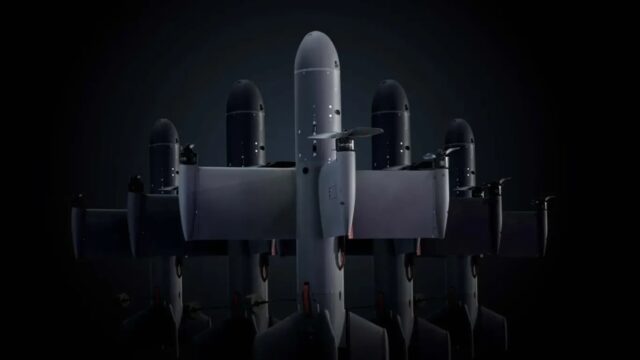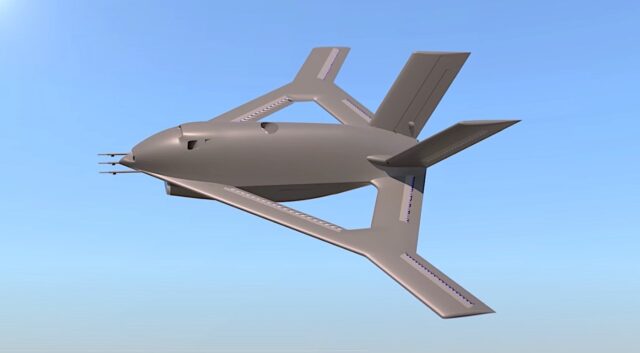Leonardo reveals AI-powered Michelangelo dome: NATO’s 1st unified defence shield against fast-evolving missile threats

November 27, 2025

Leonardo has pulled the curtain back on Michelangelo, an AI-enabled, multi-domain defence architecture that CEO and GM Roberto Cingolani says is designed to become Europe’s first fully interoperable “security dome” against hypersonic missiles, mass drone attacks and hybrid digital warfare.
Speaking at a technical briefing in Rome attended by Italy’s Defence Minister and Chiefs of Staff, Cingolani laid out an unusually blunt assessment of Europe’s vulnerability and an equally ambitious roadmap for addressing it.
“These threats can come in just a couple of seconds,” he said. “We don’t have enough time to send emails or exchange messages. We have to react in real time.”
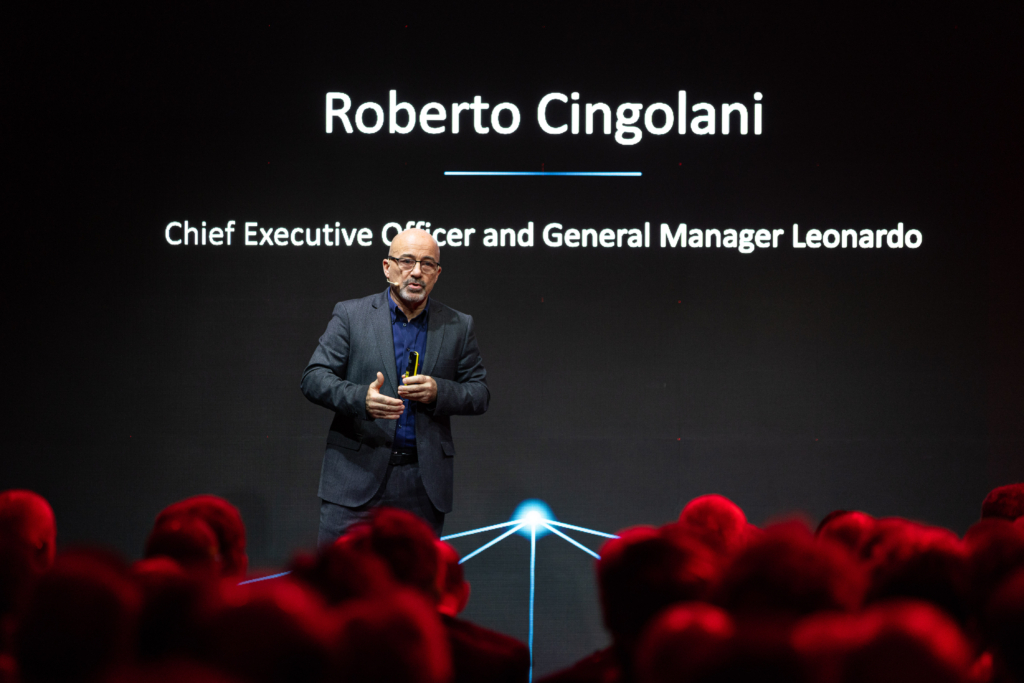
At the heart of the project is a conviction that AI-accelerated command and control is no longer optional but essential. Michelangelo is designed to fuse sensor data, evaluate threats, assign shooters and coordinate cross-domain responses faster than any conventional operations centre can manage.
Discover more of our exclusive stories and interviews here
AI-enabled kill web replaces old kill chain model
Cingolani framed the challenge through the doctrinal shift from a rigid, linear “kill chain” to a distributed, AI-supported kill web, where:
- any sensor in any domain detects
- AI fuses and evaluates
- the best effector is selected automatically
- operators retain final authority, but at machine speed
“With the kill web, we will have any sensor, best shooter,” he said. “It’s an orchestra of people who play different instruments, but who then have to create synergies… it has to work on the battlefield as well.”
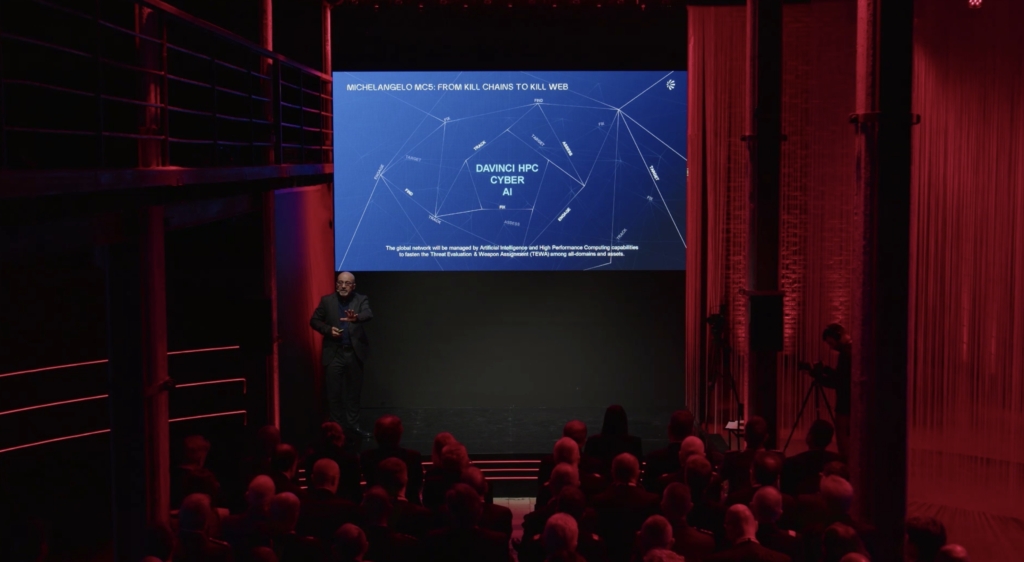
The intention is to transform Italian and, later, NATO-aligned forces into a single, synchronised defensive organism. Ships, land systems, fighter jets, drones and satellite constellations would feed into a unified AI-driven layer that can track, predict and neutralise threats in real time.
The alternative, he suggested, is strategic blindness. “If an object travels at two or three kilometres per second, and I don’t know where it will strike a few minutes in advance, I may already have been hit. I can’t neutralise it.”
Europe’s missile defence gap widens as hypersonic threats accelerate
Cingolani repeatedly emphasised geography: Europe is not shielded by oceans. Future hypersonic or manoeuvrable weapons launched from hostile states could reach major capitals in five to seven minutes, leaving no time for manual processing.
And while the public debate often centres on high-end threats, Cingolani pointed out that the war in Ukraine demonstrated how low-cost drones, commercially derived and digitally augmented, can destroy legacy armour costing tens of millions.

“Young soldiers fitted half a kilo of explosives onto drones connected to commercial satellite networks and neutralised tanks costing €20 million,” he said. “A new paradigm.”
He also noted that Western nations are now seeing 18,000 hybrid attacks a year, ranging from cyber intrusions to systems probing and infrastructure disruption attempts.
AI, satellites and HPC form the core of Leonardo’s Michelangelo system
Leonardo is positioning itself as the only European company with the full tech stack to deliver the system: sensors, effectors, space assets, cyber capability, AI development and high-performance computing.
“We have more than 2,000 engineers who are skilled to work with AI systems, and over 200 AI developers,” Cingolani said, adding that Leonardo’s DaVinci supercomputing platform will double its capacity in the coming months.
Satellites are central to the plan. The new ‘Project Bromo’ Leonardo–Thales–Airbus facility in Rome will manufacture 100 satellites per year, forming constellations designed for missile-warning, infrared plume detection and trajectory prediction.
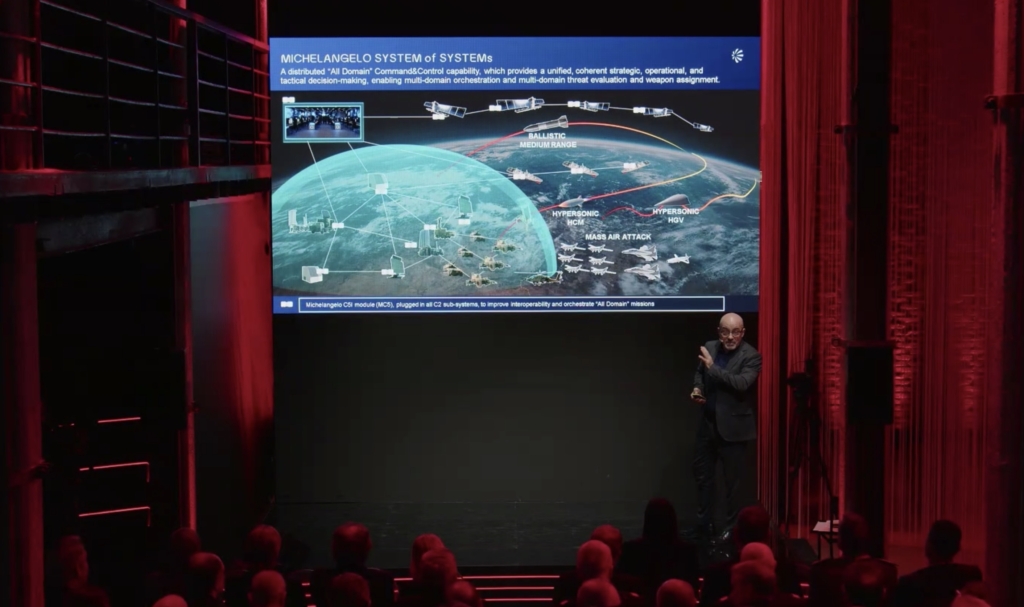
“These satellites have to see an object flying at five kilometres per second,” Cingolani said. “Those who have these satellites have a detection and forecast strength that nobody else has.”
Crucially, Michelangelo is designed so that even small European nations without fifth-generation fighters or top-tier SAM systems can plug in.
“If a country doesn’t have money to buy the F-35 or the Patriot, if they have a missile somewhere, we can integrate it in the Michelangelo dome,” he said. “We add the ability to communicate under NATO doctrines.”
Leonardo’s multi-domain portfolio underpins the Michelangelo defence dome
Cingolani was candid that Leonardo’s unique selling point is its portfolio continuity across all domains:
- long-range and short-range radars
- missiles and artillery effectors
- drones up to 10-ton payload
- GCAP sixth-generation fighter collaboration
- new MBT with Rheinmetall
- space constellations
- cyber-secure communication systems
“Nobody else can propose this kind of architecture,” he said. “We have the sensors, the AI, the data, the software, the hardware.”
He added that Europe now faces an ethical dilemma: adversaries will use any digital or kinetic means available, while Western nations must maintain ethical AI boundaries.
“Our adversaries don’t care about AI ethics,” he said. “We must defend ourselves, or we will be overwhelmed.”
Read more: Golden Dome gets $25 billion for missile defence with focus on weaponising space
Michelangelo’s 2026 rollout begins in Italy before wider NATO integration
Leonardo will deliver its first “dead zone” defensive layer for Italy by 2026, integrating existing national systems into the new AI-enabled architecture. This domestic-first approach, Cingolani stressed, is about speed of implementation, not building an Italian-only shield.
He addressed the relationship with Germany’s European Sky Shield Initiative (ESSI) directly, describing Michelangelo as a practical accelerator rather than a rival. Some European programmes, he noted, remain “still on paper”, whereas Michelangelo is an industrial project with clear roles, responsibilities and near-term deliverables. The intention is that Italian work feeds into, rather than replaces, Europe’s wider air and missile defence plans.
A broader Integrated Air and Missile Defence (IAMD) capability, including ballistic and eventually hypersonic intercept layers, will follow through 2027–2030 as new long-range radars, satellite constellations and AI engines come online.
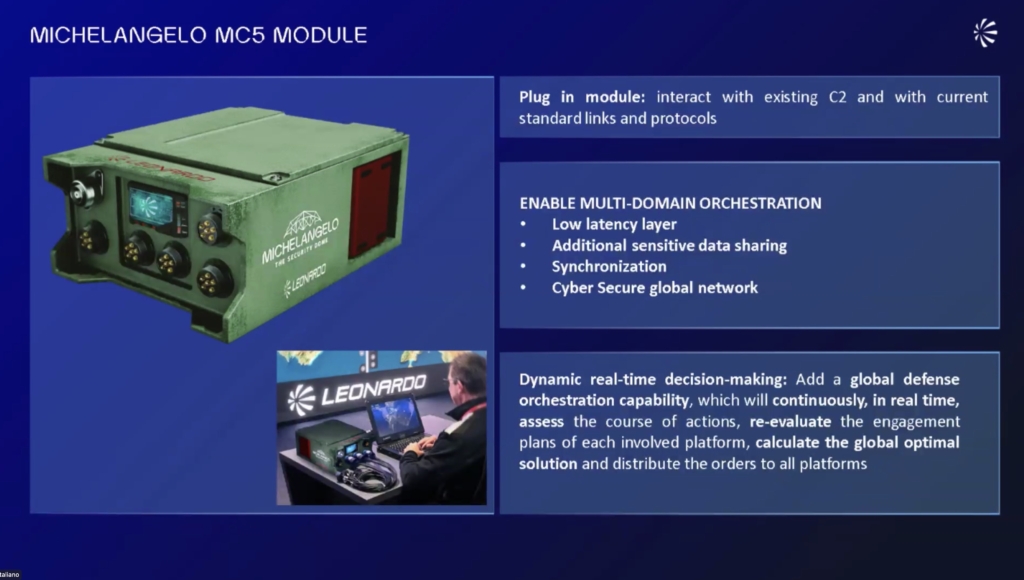
Cingolani was keen to underline that the architecture is designed from the start for NATO interoperability and expeditionary use, not just homeland security.
“A domestic dome is nonsense. We are in NATO, and our operators are acting in NATO,” he said, framing Michelangelo as “the first attempt to let everybody enter under the NATO umbrella, with existing command and control, existing doctrines and protocols.”
He argued that this open-architecture model is particularly important for Eastern European allies that “cannot make it on their own” and may not operate high-end systems such as the F-35 or Patriot, but could still plug their existing assets into a wider shield.
“This is Linux for defence,” Cingolani said. “I don’t want you to buy my operating system. I give you my Linux, and then you do what you want… You have an old TV, I give you the digital box, and you transform your old TV into a smart TV – it’s the same principle.”
In the long term, he said, the goal is that this modular, AI-enabled layer will help make Europe safer by turning today’s disparate national systems into a single, NATO-compatible defensive web.
Get the latest aerospace defence news here on AGN.
